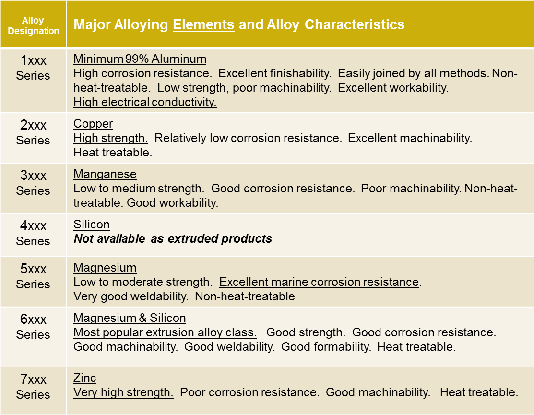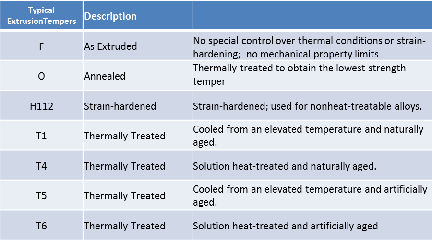Alloys & Tempers
Pure aluminum has minimal commercial use, and is typically alloyed with other elements to gain strength or other desired physical attributes. The major alloy designations, compositions, and characteristics are as follows:

|
In addition to alloy selection, temper — the hardness and strength imparted to the metal by mechanical or thermal treatment — determines the ultimate physical performance of an aluminum extrusion.
Non-heat-treatable alloys — 1xxx, 3xxx, and 5xxx series — develop strength via cold work after extruding, if the section shape permits.
Heat-treatable alloys — 2xxx,6xxx, and 7xxx series — have the highest strength of all aluminum alloys and attain their maximum strength through controlled heat treatment, often in a special furnace.
Temper designations are as follows:

|
A complete alloy-temper designation reads like this: 6063-T5. This indicates a particular 6xxx series (Mg, Si) alloy which is thermally treated by cooling from an elevated temperature and artificially aged.
For additional information, including performance parameters, on commonly used aluminum extrusion alloys, click here.
Note: International alloy designations vary from those used in the US. Click here for a table of those foreign alloys that are essentially equivalent in composition to those commonly used in the US.
 -
-




 |
|